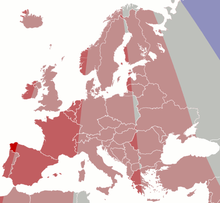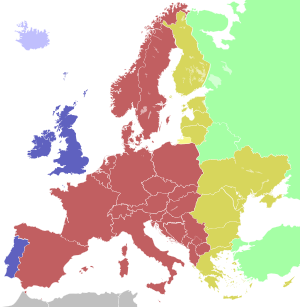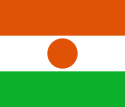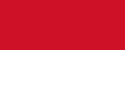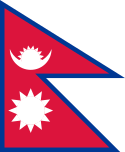Strefa czasowa
Strefa czasowa – wytyczony obszar powierzchni Ziemi o szerokości średnio 15° (360°/24) długości geograficznej, rozciągający się południkowo między biegunami, w którym urzędowo obowiązuje jednakowy czas (czas strefowy). Przeważnie jest on średnim czasem słonecznym środkowego południka tej strefy, który różni się o całkowitą liczbę godzin od czasu uniwersalnego. Są jednak wprowadzone urzędowo strefy, w których czas różni się od czasu uniwersalnego o niecałkowitą liczbę godzin.
Geneza i zasady podziału
Wszystkie punkty położone na tym samym południku mają ten sam czas lokalny (miejscowy). Każda zmiana długości geograficznej powoduje zmianę lokalnego czasu – gdy ludzie zaczęli przemieszczać się coraz częściej i szybciej, stawało się to bardzo niewygodne. Czas uniwersalny i strefy czasowe zostały zaproponowane w 1878 roku przez kanadyjskiego wynalazcę Sandforda Fleminga, zaś wprowadzono je w 1884 roku.
Całą Ziemię podzielono na 24 strefy czasowe o szerokości 15° każda. W praktyce strefy czasowe o granicach wytyczonych przez południki obowiązują jedynie na morzach i oceanach. Na lądach ich kształt jest zmodyfikowany tak, by w małych i średnich państwach obowiązywała tylko jedna strefa czasowa. Większe państwa znajdują się zwykle w kilku strefach czasowych (m.in. Stany Zjednoczone, Kanada, Brazylia, Rosja, Australia), choć nie jest to regułą – w Chinach obowiązuje jedna strefa czasowa, pomimo iż różnica w czasie słonecznym między wschodnimi i zachodnimi prowincjami wynosi ponad 3 godziny.
Poza standardowymi strefami, pomiędzy którymi różnice w czasie mierzone są pełnymi godzinami, istnieją strefy o różnicach rzędu 30 minut (m.in. UTC+3:30 używana w Iranie) lub kwadransu (m.in. UTC+5:45 w Nepalu). W przeszłości funkcjonowały także strefy o bardziej nieregularnych różnicach, jak np. UTC+0:20, stosowana w Holandii przed II wojną światową.
Na obowiązującą w danym kraju strefę czasową nierzadko wpływ ma czas stosowany w sąsiednich państwach. Przykładowo Hiszpania i Francja znajdują się w strefie UTC+1:00, wspólnej ze znaczną częścią Europy, choć położone są na długościach geograficznych odpowiadających strefie UTC+0:00. Strefę czasową w Hiszpanii zmieniono z UTC+0:00 na UTC+1:00 po dojściu do władzy gen. Franco, który chciał w ten sposób symbolicznie zbliżyć kraj do nazistowskich Niemiec. Taką samą zmianę wprowadzono we Francji pod naciskiem Hitlera po kapitulacji tego kraju w 1940 r. W Hiszpanii po demokratyzacji kilkukrotnie podejmowano debatę nad zmianą strefy czasowej – za każdym razem zakończoną zachowaniem status quo[1]. Na niektórych wyspach leżących na Oceanie Spokojnym na wschód od południka 180° (tj. na półkuli zachodniej), jak Tokelau czy Tonga związki polityczno-ekonomiczne z państwami wschodniej półkuli (Australia, Nowa Zelandia) spowodowały zaadaptowanie niestandardowych stref, jak UTC+14:00, które poprzez przesunięcie o 24 godziny w przód względem standardowych dla tych długości stref typu UTC-10:00, zapewniają spójność daty z tymi krajami (jednocześnie powstaje jednak różnica nawet 26 godzin między tymi wyspami a podobnie położonymi terytoriami, w których te strefy nie funkcjonują).
Czas letni
Na faktyczny czas w poszczególnych krajach wpływ ma także przestrzeganie bądź nie czasu letniego. W jego wyniku część krajów dokonuje w okresie letnim (odmiennym dla półkuli północnej i południowej) przestawienia czasu o godzinę w przód względem standardowego. Data dokonania zmiany często jest przy tym odmienna dla różnych terytoriów – na północ od równika zmianę na czas letni wykonuje się w marcu lub kwietniu, a odwrotną w okresie od września do listopada, na południe od równika czas letni wprowadza się we wrześniu lub październiku, a powrót następuje między lutym a kwietniem. Zdarza się, że czas letni obowiązuje jedynie w części kraju (np. w Kanadzie zmiany nie dokonuje się między innymi w prowincji Saskatchewan).
Linia zmiany daty
Międzynarodowa linia zmiany daty przebiega wzdłuż granicy stref od UTC+12:00 do +14:00 i UTC-12:00, częściowo pokrywając się z południkiem 180°. Czas obowiązujący na terytoriach położonych na zachód od tej linii jest przesunięty o dobę do przodu względem czasu terytoriów położonych na wschód od niej; np. na Fidżi (UTC+12:00) jest zawsze ta sama godzina co na wyspie Baker (UTC-12:00), choć data stale różni się o jeden dzień.
Lista stref czasowych i terytoriów w nich leżących
UTC-12:00
Strefa całoroczna
UTC-11:00
Strefa całoroczna
UTC-10:00
Strefa całoroczna
 Johnston
Johnston Polinezja Francuska (Wyspy Tubuai, Tuamotu, Wyspy Towarzystwa)
Polinezja Francuska (Wyspy Tubuai, Tuamotu, Wyspy Towarzystwa) Stany Zjednoczone (Hawaje)
Stany Zjednoczone (Hawaje) Wyspy Cooka
Wyspy Cooka
Półkula północna. Czas letni: UTC-9:00
UTC-09:30
Strefa całoroczna
UTC-09:00
Strefa całoroczna
Półkula północna. Czas letni: UTC-8:00
UTC-08:00
Strefa całoroczna
Półkula północna. Czas letni: UTC-7:00
 Kanada (zachód)
Kanada (zachód) Meksyk (Kalifornia Dolna)
Meksyk (Kalifornia Dolna) Stany Zjednoczone (zachód)
Stany Zjednoczone (zachód)
UTC-07:00
Strefa całoroczna
Półkula północna. Czas letni: UTC-6:00
 Kanada (środkowy zachód)
Kanada (środkowy zachód) Meksyk (zachód)
Meksyk (zachód) Stany Zjednoczone (środkowy zachód)
Stany Zjednoczone (środkowy zachód)
UTC-06:00
Strefa całoroczna
 Belize
Belize Chile (Wyspa Wielkanocna)
Chile (Wyspa Wielkanocna) Ekwador (Prowincja Galápagos)
Ekwador (Prowincja Galápagos) Gwatemala
Gwatemala Honduras
Honduras Kanada (Saskatchewan)
Kanada (Saskatchewan) Kostaryka
Kostaryka Nikaragua
Nikaragua Salwador
Salwador
Półkula północna. Czas letni: UTC-5:00
 Kanada (środkowy wschód)
Kanada (środkowy wschód) Meksyk (środek i wschód)
Meksyk (środek i wschód) Stany Zjednoczone (środkowy wschód)
Stany Zjednoczone (środkowy wschód)
UTC-05:00
Strefa całoroczna
Półkula północna. Czas letni: UTC-4:00
 Bahamy
Bahamy Kanada (środkowy wschód) – EST
Kanada (środkowy wschód) – EST Kuba
Kuba Stany Zjednoczone (wschód) – EST
Stany Zjednoczone (wschód) – EST Turks i Caicos
Turks i Caicos
UTC-04:00
Strefa całoroczna
 Anguilla
Anguilla Antigua i Barbuda
Antigua i Barbuda Antyle Holenderskie
Antyle Holenderskie Aruba
Aruba Barbados
Barbados Boliwia
Boliwia Brazylia (zachód)
Brazylia (zachód) Brytyjskie Wyspy Dziewicze
Brytyjskie Wyspy Dziewicze Dominika
Dominika Dominikana
Dominikana Gwadelupa
Gwadelupa Grenada
Grenada Gujana
Gujana Kanada (wschodni Quebec)
Kanada (wschodni Quebec) Martynika
Martynika Montserrat
Montserrat Portoryko
Portoryko Saint Kitts i Nevis
Saint Kitts i Nevis Saint Lucia
Saint Lucia Saint Vincent i Grenadyny
Saint Vincent i Grenadyny Trynidad i Tobago
Trynidad i Tobago Wenezuela
Wenezuela Wyspy Dziewicze Stanów Zjednoczonych
Wyspy Dziewicze Stanów Zjednoczonych
Półkula północna. Czas letni: UTC-3:00
 Bermudy
Bermudy Grenlandia (północny zachód)
Grenlandia (północny zachód) Kanada (wschód)
Kanada (wschód)
Półkula południowa. Czas letni: UTC-3:00
UTC-03:30
Półkula północna. Czas letni: UTC-2:30
UTC-03:00
Strefa całoroczna
Półkula północna. Czas letni: UTC-2:00
Półkula południowa. Czas letni: UTC-2:00
 Brazylia (południowy wschód)
Brazylia (południowy wschód)
UTC-02:00
Strefa całoroczna
 Brazylia (wyspy atlantyckie)
Brazylia (wyspy atlantyckie) Georgia Południowa i Sandwich Południowy
Georgia Południowa i Sandwich Południowy
UTC-01:00
Strefa całoroczna
Półkula północna. Czas letni: UTC+0:00
 Grenlandia (wschód)
Grenlandia (wschód) Portugalia (Azory)
Portugalia (Azory)
UTC±00:00
Strefa całoroczna
 Burkina Faso
Burkina Faso Gambia
Gambia Ghana
Ghana Gwinea
Gwinea Gwinea Bissau
Gwinea Bissau Islandia
Islandia Liberia
Liberia Mali
Mali Maroko
Maroko Mauretania
Mauretania Sahara Zachodnia
Sahara Zachodnia Senegal
Senegal Sierra Leone
Sierra Leone Wyspa Świętej Heleny, Wyspa Wniebowstąpienia i Tristan da Cunha
Wyspa Świętej Heleny, Wyspa Wniebowstąpienia i Tristan da Cunha Togo
Togo Wybrzeże Kości Słoniowej
Wybrzeże Kości Słoniowej Wyspa Bouveta
Wyspa Bouveta Wyspy Świętego Tomasza i Książęca
Wyspy Świętego Tomasza i Książęca
Półkula północna. Czas letni: UTC+1:00
 Guernsey
Guernsey Hiszpania (Wyspy Kanaryjskie, Hiszpańskie posiadłości w Afryce Północnej)
Hiszpania (Wyspy Kanaryjskie, Hiszpańskie posiadłości w Afryce Północnej) Irlandia
Irlandia Jersey
Jersey Portugalia
Portugalia Wielka Brytania
Wielka Brytania Wyspa Man
Wyspa Man Wyspy Owcze
Wyspy Owcze
UTC+01:00
Strefa całoroczna
 Algieria
Algieria Angola
Angola Benin
Benin Czad
Czad Tunezja
Tunezja Demokratyczna Republika Konga (zachód)
Demokratyczna Republika Konga (zachód) Gabon
Gabon Gwinea Równikowa
Gwinea Równikowa Kamerun
Kamerun Kongo
Kongo Niger
Niger Nigeria
Nigeria Republika Środkowoafrykańska
Republika Środkowoafrykańska
Półkula północna. Czas letni: UTC+2:00
 Albania
Albania Andora
Andora Austria
Austria Belgia
Belgia Bośnia i Hercegowina
Bośnia i Hercegowina Chorwacja
Chorwacja Czarnogóra
Czarnogóra Czechy
Czechy Dania
Dania Francja
Francja Gibraltar
Gibraltar Hiszpania
Hiszpania Holandia
Holandia Jan Mayen
Jan Mayen Kosowo
Kosowo Liechtenstein
Liechtenstein Luksemburg
Luksemburg Macedonia Północna
Macedonia Północna Malta
Malta Monako
Monako Niemcy
Niemcy Norwegia
Norwegia Polska
Polska San Marino
San Marino Serbia
Serbia Słowacja
Słowacja Słowenia
Słowenia Svalbard
Svalbard Szwajcaria
Szwajcaria Szwecja
Szwecja Watykan
Watykan Węgry
Węgry Włochy
Włochy
Półkula południowa. Czas letni: UTC+2:00
- Brak od września 2017[2].
UTC+02:00
Strefa całoroczna
 Botswana
Botswana Burundi
Burundi Demokratyczna Republika Konga (wschód)
Demokratyczna Republika Konga (wschód) Egipt
Egipt Libia
Libia Lesotho
Lesotho Malawi
Malawi Mozambik
Mozambik Namibia (od września 2017)[2]
Namibia (od września 2017)[2] Południowa Afryka
Południowa Afryka Rosja (Obwód kaliningradzki)
Rosja (Obwód kaliningradzki) Rwanda
Rwanda Eswatini
Eswatini Zambia
Zambia Zimbabwe
Zimbabwe
Półkula północna. Czas letni: UTC+3:00
 Akrotiri i Dhekelia
Akrotiri i Dhekelia Bułgaria
Bułgaria Cypr
Cypr Cypr Północny[3]
Cypr Północny[3] Estonia
Estonia Finlandia
Finlandia Grecja
Grecja Izrael
Izrael Jordania
Jordania Liban
Liban Litwa
Litwa Łotwa
Łotwa Mołdawia
Mołdawia Palestyna
Palestyna Rumunia
Rumunia Syria
Syria Ukraina
Ukraina
UTC+03:00
Strefa całoroczna
 Arabia Saudyjska
Arabia Saudyjska Bahrajn
Bahrajn Białoruś
Białoruś Dżibuti
Dżibuti Erytrea
Erytrea Etiopia
Etiopia Francuskie Terytoria Południowe i Antarktyczne (Wyspy Rozproszone)
Francuskie Terytoria Południowe i Antarktyczne (Wyspy Rozproszone) Irak
Irak Jemen
Jemen Katar
Katar Kenia
Kenia Komory
Komory Kuwejt
Kuwejt Madagaskar
Madagaskar Majotta
Majotta Rosja (większość europejskiej części kraju)
Rosja (większość europejskiej części kraju) Somalia
Somalia Sudan
Sudan Sudan Południowy
Sudan Południowy Tanzania
Tanzania Turcja
Turcja Uganda
Uganda
UTC+03:30
Półkula północna. Czas letni: UTC+4:30
UTC+04:00
Strefa całoroczna
 Armenia
Armenia Azerbejdżan
Azerbejdżan Francuskie Terytoria Południowe i Antarktyczne (Wyspy Crozeta)
Francuskie Terytoria Południowe i Antarktyczne (Wyspy Crozeta) Gruzja
Gruzja Mauritius
Mauritius Oman
Oman Reunion
Reunion Rosja (Obwód samarski i Udmurcja)
Rosja (Obwód samarski i Udmurcja) Seszele
Seszele Zjednoczone Emiraty Arabskie
Zjednoczone Emiraty Arabskie
UTC+04:30
Strefa całoroczna
UTC+05:00
Strefa całoroczna
 Francuskie Terytoria Południowe i Antarktyczne (Wyspy Kerguelena oraz Święty Paweł i Amsterdam)
Francuskie Terytoria Południowe i Antarktyczne (Wyspy Kerguelena oraz Święty Paweł i Amsterdam) Kazachstan (zachód)
Kazachstan (zachód) Malediwy
Malediwy Rosja (zachodnia część azjatycka)
Rosja (zachodnia część azjatycka) Tadżykistan
Tadżykistan Turkmenistan
Turkmenistan Uzbekistan
Uzbekistan Wyspy Heard i McDonalda
Wyspy Heard i McDonalda
Półkula północna. Czas letni: UTC+6:00
UTC+05:30
Strefa całoroczna
UTC+05:45
Strefa całoroczna
UTC+06:00
Strefa całoroczna
 Bangladesz
Bangladesz Bhutan
Bhutan Brytyjskie Terytorium Oceanu Indyjskiego
Brytyjskie Terytorium Oceanu Indyjskiego Kazachstan (środek i wschód)
Kazachstan (środek i wschód) Kirgistan
Kirgistan Rosja (Kraj Ałtajski, obwód nowosybirski, obwód omski, obwód tomski i Republika Ałtaju)
Rosja (Kraj Ałtajski, obwód nowosybirski, obwód omski, obwód tomski i Republika Ałtaju)
UTC+06:30
Strefa całoroczna
UTC+07:00
Strefa całoroczna
 Indonezja (zachód)
Indonezja (zachód) Kambodża
Kambodża Laos
Laos Mongolia (zachód)
Mongolia (zachód) Rosja (środkowo-zachodnia część azjatycka)
Rosja (środkowo-zachodnia część azjatycka) Tajlandia
Tajlandia Wietnam
Wietnam Wyspa Bożego Narodzenia
Wyspa Bożego Narodzenia
UTC+08:00
Strefa całoroczna
 Australia (Australia Zachodnia)
Australia (Australia Zachodnia) Brunei
Brunei Chiny
Chiny Filipiny
Filipiny Indonezja (środek)
Indonezja (środek) Malezja (środek)
Malezja (środek) Mongolia (środek i wschód)
Mongolia (środek i wschód) Rosja (Obwód irkucki, Buriacja i Kraj Zabajkalski)
Rosja (Obwód irkucki, Buriacja i Kraj Zabajkalski) Singapur
Singapur Tajwan
Tajwan
UTC+09:00
Strefa całoroczna
 Indonezja (wschód)
Indonezja (wschód) Japonia
Japonia Korea Południowa
Korea Południowa Korea Północna
Korea Północna Palau
Palau Rosja (środkowa część azjatycka)
Rosja (środkowa część azjatycka) Timor Wschodni
Timor Wschodni
UTC+09:30
Strefa całoroczna
Półkula południowa. Czas letni: UTC+10:30
UTC+10:00
Strefa całoroczna
 Australia (Queensland)
Australia (Queensland) Guam
Guam Mariany Północne
Mariany Północne Mikronezja (zachód)
Mikronezja (zachód) Papua-Nowa Gwinea
Papua-Nowa Gwinea Rosja (środkowy wschód)
Rosja (środkowy wschód)
Półkula południowa. Czas letni: UTC+11:00
 Australia (południowy wschód)
Australia (południowy wschód)
UTC+10:30
Półkula południowa. Czas letni: UTC+11:00
UTC+11:00
Strefa całoroczna
 Mikronezja (wschód)
Mikronezja (wschód) Nowa Kaledonia
Nowa Kaledonia Rosja (wschodnia Jakucja)
Rosja (wschodnia Jakucja) Vanuatu
Vanuatu Wyspy Salomona
Wyspy Salomona
UTC+11:30
Strefa całoroczna
UTC+12:00
Strefa całoroczna
 Fidżi
Fidżi Kiribati (Wyspy Gilberta)
Kiribati (Wyspy Gilberta) Nauru
Nauru Rosja (daleki wschód)
Rosja (daleki wschód) Tuvalu
Tuvalu Wake
Wake Wallis i Futuna
Wallis i Futuna Wyspy Marshalla
Wyspy Marshalla
Półkula południowa. Czas letni: UTC+13:00
UTC+12:45
Półkula południowa. Czas letni: UTC+13:45
UTC+13:00
Strefa całoroczna
Półkula południowa. Czas letni: UTC+14:00
UTC+14:00
Strefa całoroczna
Zobacz też
- czas miejscowy, czas słoneczny, czas urzędowy
Przypisy
- ↑ Agnieszka Mazurczyk, Hiszpanie są zmęczeni, chcą cofnąć wskazówki zegara o godzinę. Uda się tym razem?, 21 sierpnia 2016 [dostęp 2016-08-23].
- ↑ a b Namibia abandons winter time to boost business, www.xinhuanet.com, 30 marca 2018 [dostęp 2018-09-14] (ang.).
- ↑ Northern Cyprus Reintroduces DST. timeanddate.com, 2017-10-19. [dostęp 2017-10-29]. (ang.).
Linki zewnętrzne
Media użyte na tej stronie
The flag of Navassa Island is simply the United States flag. It does not have a "local" flag or "unofficial" flag; it is an uninhabited island. The version with a profile view was based on Flags of the World and as a fictional design has no status warranting a place on any Wiki. It was made up by a random person with no connection to the island, it has never flown on the island, and it has never received any sort of recognition or validation by any authority. The person quoted on that page has no authority to bestow a flag, "unofficial" or otherwise, on the island.
The flag of the Pitcairn Islands, arms courtesy an e-mail from the author of xrmap and the Blue Ensign from Image:Government Ensign of the United Kingdom.svg
Flag of Canada introduced in 1965, using Pantone colors. This design replaced the Canadian Red Ensign design.
Łatwo można dodać ramkę naokoło tej grafiki
Made by author of Xramp, first uploaded by Denelson83 as Flag of Ecuador.svg, modifications by Husunqu.
Flag of Jamaica. “The sunshine, the land is green, and the people are strong and bold” is the symbolism of the colours of the flag. GOLD represents the natural wealth and beauty of sunlight; GREEN represents hope and agricultural resources; BLACK represents the strength and creativity of the people. The original symbolism, however, was "Hardships there are, but the land is green, and the sun shineth", where BLACK represented the hardships being faced.
The national and official state flag of Haiti; arms obtained from http://www.webchantier.com/. The civil flag can be found at here.
Flag of the Turks and Caicos Islands
Flag of Anguilla (adopted on 30 May 1990) - RGB colours, 1:2 dimensions and construction details based partly on the templates: Flag of Anguilla – A Brief History
The flag of Aruba
The flag of the Dominican Republic has a centered white cross that extends to the edges. This emblem is similar to the flag design and shows a bible, a cross of gold and 6 Dominican flags. There are branches of olive and palm around the shield and above on the ribbon is the motto "Dios,Patria!, Libertad" ("God, Country, Freedom") and to amiable freedom. The blue is said to stand for liberty, red for the fire and blood of the independence struggle and the white cross symbolized that God has not forgotten his people. "Republica Dominicana". The Dominican flag was designed by Juan Pablo Duarte, father of the national Independence of Dominican Republic. The first dominican flag was sewn by a young lady named Concepción Bona, who lived across the street of El Baluarte, monument where the patriots gathered to fight for the independence, the night of February 27th, 1844. Concepción Bona was helped by her first cousin María de Jesús Pina.
Flag of Portugal, created by Columbano Bordalo Pinheiro (1857-1929), officially adopted by Portuguese government in June 30th 1911 (in use since about November 1910). Color shades matching the RGB values officially reccomended here. (PMS values should be used for direct ink or textile; CMYK for 4-color offset printing on paper; this is an image for screen display, RGB should be used.)
Flag of Senegal
Flag of the Ivory Coast, written by Jon Harald Søby, modified by Zscout370. The colors match to what is reported at http://fotw.vexillum.com/flags/ci.html.
Autor: Pedro A. Gracia Fajardo, escudo de Manual de Imagen Institucional de la Administración General del Estado, Licencja: CC0
Flaga Hiszpanii
The national flag of the Democratic Republic of the Congo. Created according to the 2006 constitution : Son emblème est le drapeau bleu ciel, orné d’une étoile jaune dans le coin supérieur gauche et traversé en biais d’une bande rouge finement encadrée de jaune. (Its symbol is a sky blue flag, decorated with a yellow star in the upper left corner and crossed in the diagonal by a red strip with thin yellow borders) It seems to be identical, except for a lighter field hue, to the 1966–1971 flag.
Please do not replace the simplified code by a version created with Inkscape or another vector graphics editor❗
The proportions of this flag are 3:2; however, there is no official definition for the correct proportions and also 5:3 is widely used.
Flag of Albania
Łatwo można dodać ramkę naokoło tej grafiki
Flag of Gibraltar
Flag of Liechtenstein
Flag of Namibia
Flaga Finlandii
Flag of Israel. Shows a Magen David (“Shield of David”) between two stripes. The Shield of David is a traditional Jewish symbol. The stripes symbolize a Jewish prayer shawl (tallit).
Łatwo można dodać ramkę naokoło tej grafiki
Flag of Ethiopia
The Flag of India. The colours are saffron, white and green. The navy blue wheel in the center of the flag has a diameter approximately the width of the white band and is called Ashoka's Dharma Chakra, with 24 spokes (after Ashoka, the Great). Each spoke depicts one hour of the day, portraying the prevalence of righteousness all 24 hours of it.
Flago de la Kokosinsuloj, uzo ne oficiala
bendera Indonesia
Flag of Laos
The national flag of Kingdom of Thailand since September 2017; there are total of 3 colours:
- Red represents the blood spilt to protect Thailand’s independence and often more simply described as representing the nation.
- White represents the religion of Buddhism, the predominant religion of the nation
- Blue represents the monarchy of the nation, which is recognised as the centre of Thai hearts.
The flag of Guam, courtesy an e-mail from the author of xrmap. Modifications by Denelson83.
Flag of New Zealand. Specification: http://www.mch.govt.nz/nzflag/description.html , quoting New Zealand Gazette, 27 June 1902.
Autor: User:S Sepp, Licencja: CC-BY-SA-3.0
Alternative version of image:Wooden hourglass 2.jpg. Wooden hourglass. Total height:25 cm. Wooden disk diameter: 11.5 cm. Running time of the hourglass: 1 hour. Hourglass in other languages: 'timglas' (Swedishrtrttttyo), 'sanduhr' (German), 'sablier' (French), 'reloj de arena' (Spanish), 'zandloper' (Dutch), 'klepsydra' (Polish), 'přesýpací hodiny' (Czech), 'ampulheta' (Portuguese).
The national flag of Nauru. Official Pantone colours are: PMS 280 blue, PMS 123 yellow.
Autor: Nightstallion (original)
Zscout370 (most recent), Licencja: CC0
Flag of Tuvalu.
Autor: See File history below for details., Licencja: CC0
The Flag of Dominica.
Mapa stref czasowych
Flag of Mauritania, adopted in 2017. The National Assembly added red stripes to the top and bottom edges to represent “the blood shed by the martyrs of independence”.
Flag of South Sudan (originally of the Sudan People's Liberation Army/Movement)
Autor: Naive cynic z angielskiej Wikipedii, Licencja: CC-BY-SA-3.0
Difference between legal time and local mean time in Europe during the summer.
Flag of Maldives. The colours used are Pantone 186 C for red and Pantone 348 C for green.
Flag of São Tomé and Príncipe
Flag of Rwanda. The flag ratio is 2:3 with the stripes being 2:1:1. Colors are the following officially: Pantone 299 C 2X (blue), RAL 6029 (green), RAL 1023 (yellow) and RAL 1003 (golden yellow). (As of 03/08/2010, the only color used is the Pantone 299 C, which is from here. The rest of the colors are RAL shades from here.)
Flag of the en:French Southern and Antarctic Lands, official since 23 February 2007
Autor: Naive cynic z angielskiej Wikipedii, Licencja: CC-BY-SA-3.0
Difference between legal time and local mean time in Europe during the winter.

